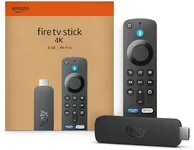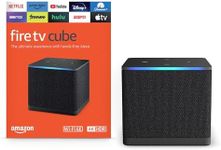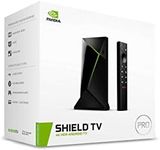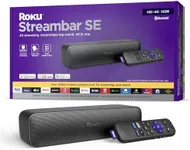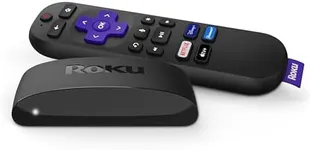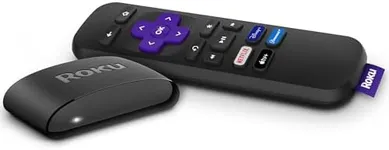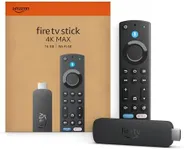Buying Guide for the Best Tv Streaming Devices
Choosing the right TV streaming device can significantly enhance your entertainment experience. With so many options available, it's important to understand the key specifications and features that will best suit your needs. By focusing on these aspects, you can ensure that you select a device that offers the best performance, compatibility, and user experience for your viewing habits.ResolutionResolution refers to the number of pixels that make up the picture on your screen. Higher resolutions mean more pixels and a clearer, sharper image. Common resolutions include 1080p (Full HD), 4K (Ultra HD), and 8K. If you have a 4K TV, you'll want a streaming device that supports 4K to take full advantage of your TV's capabilities. For older TVs, 1080p might be sufficient. Consider your TV's resolution and your desire for picture quality when choosing a device.
HDR SupportHDR (High Dynamic Range) enhances the contrast and color range of the picture, making it more vibrant and realistic. There are different HDR formats like HDR10, Dolby Vision, and HLG. If you have an HDR-compatible TV, choosing a streaming device that supports HDR can significantly improve your viewing experience. Check which HDR formats your TV supports and match them with the streaming device.
Operating SystemThe operating system (OS) of a streaming device determines its user interface and the apps available. Popular OS options include Roku, Amazon Fire TV, Apple tvOS, and Google Android TV. Each has its own ecosystem and unique features. Consider which OS you are most comfortable with and which one offers the apps and services you use most frequently. If you are already invested in a particular ecosystem (like Apple or Google), it might make sense to choose a device that integrates seamlessly with your other devices.
Voice ControlVoice control allows you to navigate and control your streaming device using voice commands. This can be a convenient feature, especially if you prefer hands-free operation. Devices may support different voice assistants like Amazon Alexa, Google Assistant, or Apple Siri. If you already use a voice assistant in your home, choosing a streaming device that supports the same assistant can provide a more integrated experience.
Content AvailabilityDifferent streaming devices offer access to different content libraries and apps. Make sure the device you choose supports the streaming services you use most, such as Netflix, Hulu, Disney+, or Amazon Prime Video. Some devices may also offer exclusive content or channels. Check the app store of the streaming device to ensure it has all the content you want to watch.
ConnectivityConnectivity options include Wi-Fi, Ethernet, and Bluetooth. Wi-Fi is the most common and convenient, but if you have a weak Wi-Fi signal, an Ethernet port can provide a more stable connection. Bluetooth can be useful for connecting wireless headphones or other accessories. Consider your home network setup and how you plan to connect your streaming device to ensure a smooth streaming experience.
Storage and PerformanceStorage capacity affects how many apps and games you can install on your streaming device. Performance, determined by the processor and RAM, affects how quickly and smoothly the device operates. If you plan to use a lot of apps or play games, look for a device with higher storage and better performance specs. For basic streaming needs, lower storage and performance may be sufficient.
Remote ControlThe remote control is your primary way of interacting with the streaming device. Some remotes offer advanced features like voice search, programmable buttons, or even a headphone jack for private listening. Consider what features are important to you in a remote control and choose a device that offers a remote that meets your needs.
